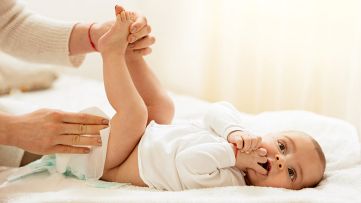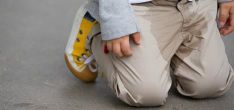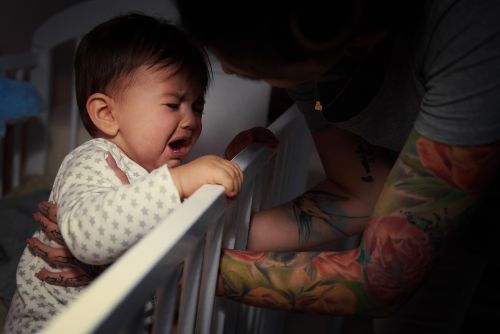
Changing a diaper might seem like a straightforward task, but when you’re dealing with a baby boy, there’s an extra challenge that many parents face: unexpected peeing during diaper changes. It’s a common scenario that can catch you off guard and leave you a mess to clean up. However, with some simple strategies and some preparation, you can minimize the chances of your little one turning diaper changes into a wet surprise.
Baby boys have a knack for timing their peeing when you least expect it. It happens because they often feel the sensation of pee when exposed to the air during diaper changes. This is a natural reflex and not something they do to make your life harder! The good news is that there are practical steps you can take to prevent those surprise sprinkles and make diaper changes smoother for both you and your baby.
This guide will teach you the techniques and tips to keep your baby boy from peeing during diaper changes. We’ve got you covered, from being prepared with the right supplies to distraction techniques and maintaining a calm demeanor. Let’s dive into the world of diaper-changing mastery and ensure a more pleasant experience for you and your little one.

| Busy parents often visit daycares for their babies’ care during the week, where babies’ needs, including potty training, are closely monitored. This ensures that even if parents remain occupied on weekends, they can find reliable assistance with managing a baby boy’s pee during diaper changes at daycares open on weekends. |
How To Keep Baby Boy From Peeing During Diaper Change? – Strategies To Follow
Here, we provide a list of diaper-changing strategies for a baby boy. Incorporating these strategies into your diaper-changing routine can significantly reduce the chances of your baby boy peeing during changes and make the experience more comfortable for you and your little one. Remember that patience and preparation are your allies in mastering the art of diaper changing.
- Be Prepared
Changing a diaper is all about preparation. Gather all the supplies you need before starting the process. Have clean diapers, wipes, a changing pad, and a change of clothes within arm’s reach. Ensure you’re using the right diaper size to ensure a snug fit that can help prevent leaks and surprise pee incidents. Setting up a clean and safe changing area, whether using a changing table or a designated changing mat, is essential. This will help you maintain better control during the diaper change and reduce potential messes.
- Timing is Key
Timing is crucial when it comes to diaper changes. Pay attention to your baby’s cues and signals that they need a diaper change. Waiting until your baby’s bladder is relatively empty can reduce the chances of them peeing during the change. Avoid rushing through the process, as quick and abrupt movements can startle your baby and trigger the need to pee. Be patient and take your time when changing diapers to minimize the risk of surprises.
- Distraction Techniques
Babies are naturally curious, and distraction techniques can help divert their attention from the diaper change. Engage your baby with toys, colorful objects, or a mobile hanging above the changing area. Singing or talking to your baby soothingly can also keep them distracted and less likely to fuss or pee. A distracted baby is less likely to focus on the urge to pee, making the diaper change smoother.
- Shielding Techniques

Consider using a small cloth or towel as a shield to prevent pee from going airborne during a diaper change. Place the cloth strategically to cover the exposed area as you open the diaper. When you’re ready to switch to a clean diaper, do so swiftly but gently to minimize your baby’s time without any protection. Hold your baby’s legs in place to help maintain control during the change.
- Involve Your Baby
Make diaper changes a bonding experience by involving your baby. Encourage them to participate by giving them a clean diaper to hold or play with (under supervision). Offer smiles, positive reinforcement, and gentle words of encouragement to keep your baby calm and cooperative. When your baby feels included and engaged, they are less likely to get fussy or pee unexpectedly.
- Stay Calm and Patient

Your baby can pick up on your emotions, so staying calm and patient is crucial throughout the diaper-changing process. If you become stressed or agitated, your baby may become anxious, too, increasing the chances of accidents. Maintain a soothing demeanor, and if an accident does happen, handle it with grace and composure. A calm and composed parent can help reassure a fussy baby and make the diaper change more pleasant for everyone involved.
- Have a Backup Plan
Despite your best efforts, accidents can still occur. Always be prepared for such situations by keeping spare diapers, wipes, and a change of clothes nearby. Having these essentials within reach will allow you to quickly address any unexpected pee incidents and avoid any further mess or discomfort for your baby. A backup plan can save the day when things don’t go as smoothly as planned.
FAQs
Why does my baby boy pee when I change his diaper?
Your baby boy may pee during diaper changes for various reasons. One common trigger is the temperature change when you remove their diaper, which can stimulate their body’s reflexes to urinate.
Babies often associate diaper changes with relief, so if they’ve been uncomfortable in a wet or soiled diaper, they might release urine as soon as it’s removed.
Babies also have tiny bladders and developing muscle control, so they may not have full control over when they urinate. Natural reflexes, like the micturition reflex, play a role as well.
To minimize these surprises, consider using distraction techniques, maintaining a calm demeanor, and being prepared with the right supplies during diaper changes.
Should you change a diaper right after they pee?
Changing a diaper right after a baby boy pees is generally a good practice. It can help prevent him from peeing again during the diaper change, as it reduces the chances of the baby feeling the need to urinate immediately after relieving himself. Peeing during or right after a diaper change often happens because the baby’s reflexes respond to the change in temperature or exposure to air.
Changing promptly after a pee prevents potential messes and keeps the baby’s skin dry and comfortable, reducing the risk of diaper rash. However, you don’t necessarily need to change the diaper immediately after every single pee, especially if your baby urinates frequently. A general guideline is to change the diaper every 2-3 hours or when you notice it’s wet. Additionally, changing before naps and bedtime is essential to ensure your baby remains comfortable throughout their sleep.
Why is my baby boy’s pee leaking?

A baby boy’s pee can leak from his diaper for various reasons, and understanding these factors can help you address the issue more effectively:
Diaper Size: Using the wrong diaper size can lead to leaks. If the diaper is too small, it may not provide sufficient coverage and containment for your baby’s urine. Choose a diaper size that fits your baby snugly but comfortably.
Fit: Even with the right diaper size, an improper fit can cause leaks. Ensure you fasten the diaper securely, with the tabs properly aligned, to prevent gaps around the waist and leg openings.
Absorbency: Not all diapers have the same level of absorbency. If your baby is experiencing frequent leaks, consider switching to a diaper designed for higher absorbency, especially during nighttime or longer periods between changes.
Diaper Type: Cloth and disposable diapers have different absorbency levels and require specific care routines. Ensure you follow the recommended guidelines for the type of diaper you’re using.
Positioning: Make sure the penis is pointed downward when putting on the diaper. This helps direct the urine towards the center of the diaper and reduces the risk of leaks.
Bursts of Urine: Babies, especially boys, can release urine in sudden bursts rather than continuously. These bursts can sometimes exceed the diaper’s absorbent capacity, causing leaks.
Too Tight or Too Loose: Too tight Diapers can cause pressure on the diaper, leading to leaks. Conversely, if the diaper is too loose, it may not provide proper containment.
Overuse: An overused diaper may reach its saturation point, causing leaks. Be mindful of the recommended time between diaper changes and avoid extending the usage beyond what’s recommended.
Baby’s Age and Development: As your baby grows and becomes more active, their diapering needs may change. Be prepared to adjust diaper sizes and techniques accordingly to accommodate their changing body and movements.
Health Concerns: In some cases, frequent leaks could be related to a medical issue, such as a urinary tract infection or an anatomical concern. If you’re concerned about ongoing leakage, consult your pediatrician for a thorough evaluation.
Conclusion
Mastering changing a baby boy’s diaper without unexpected leaks or surprises requires careful preparation, timing, and patience. Following the strategies outlined here, you can create a smoother and more pleasant diaper-changing experience for you and your little one. Remember that staying calm, providing distraction, and ensuring fit and absorbency are key to preventing mishaps. With these techniques in your parenting toolkit, you can confidently navigate the world of diaper changes while keeping your baby boy comfortable and content.
